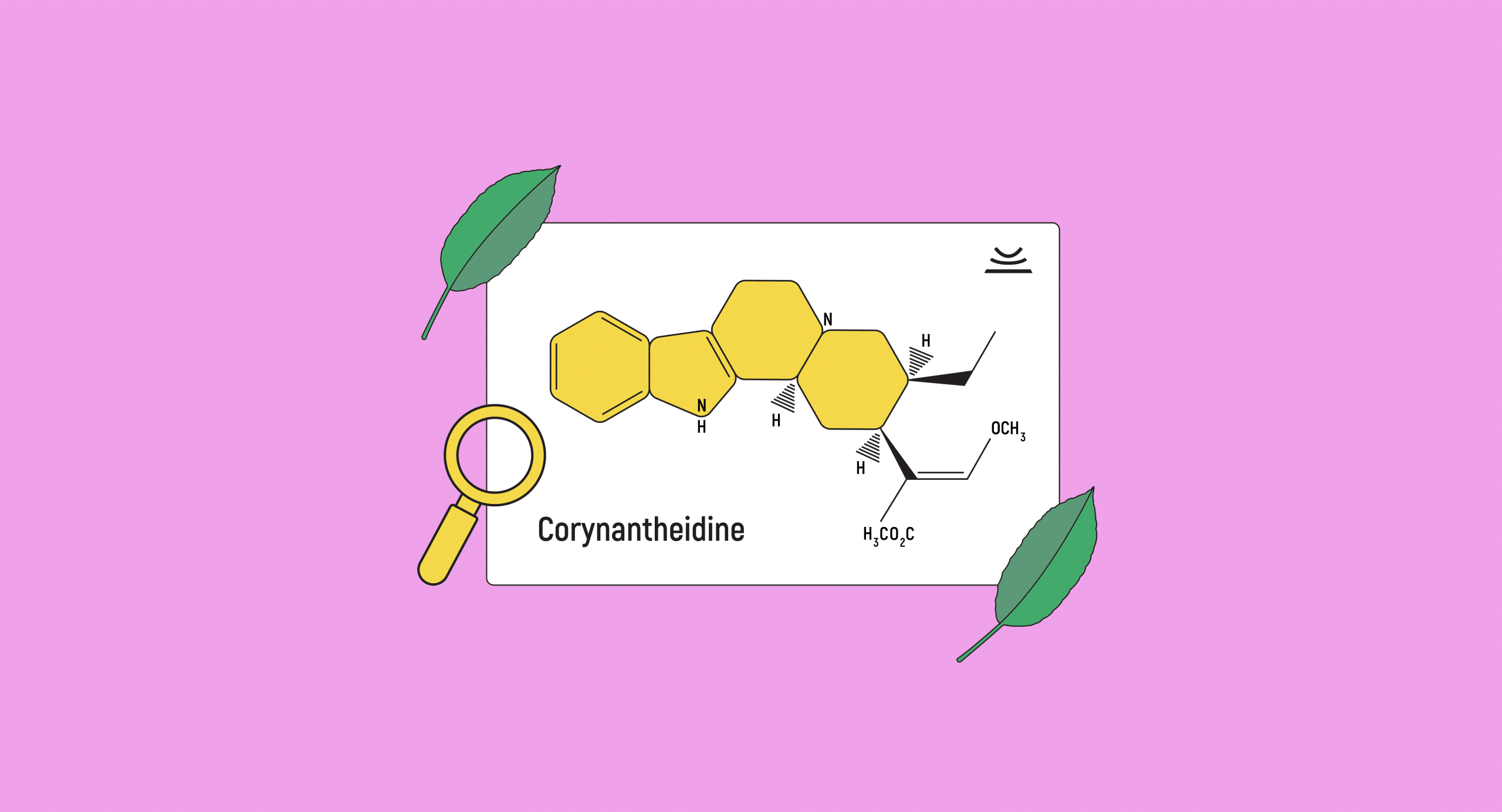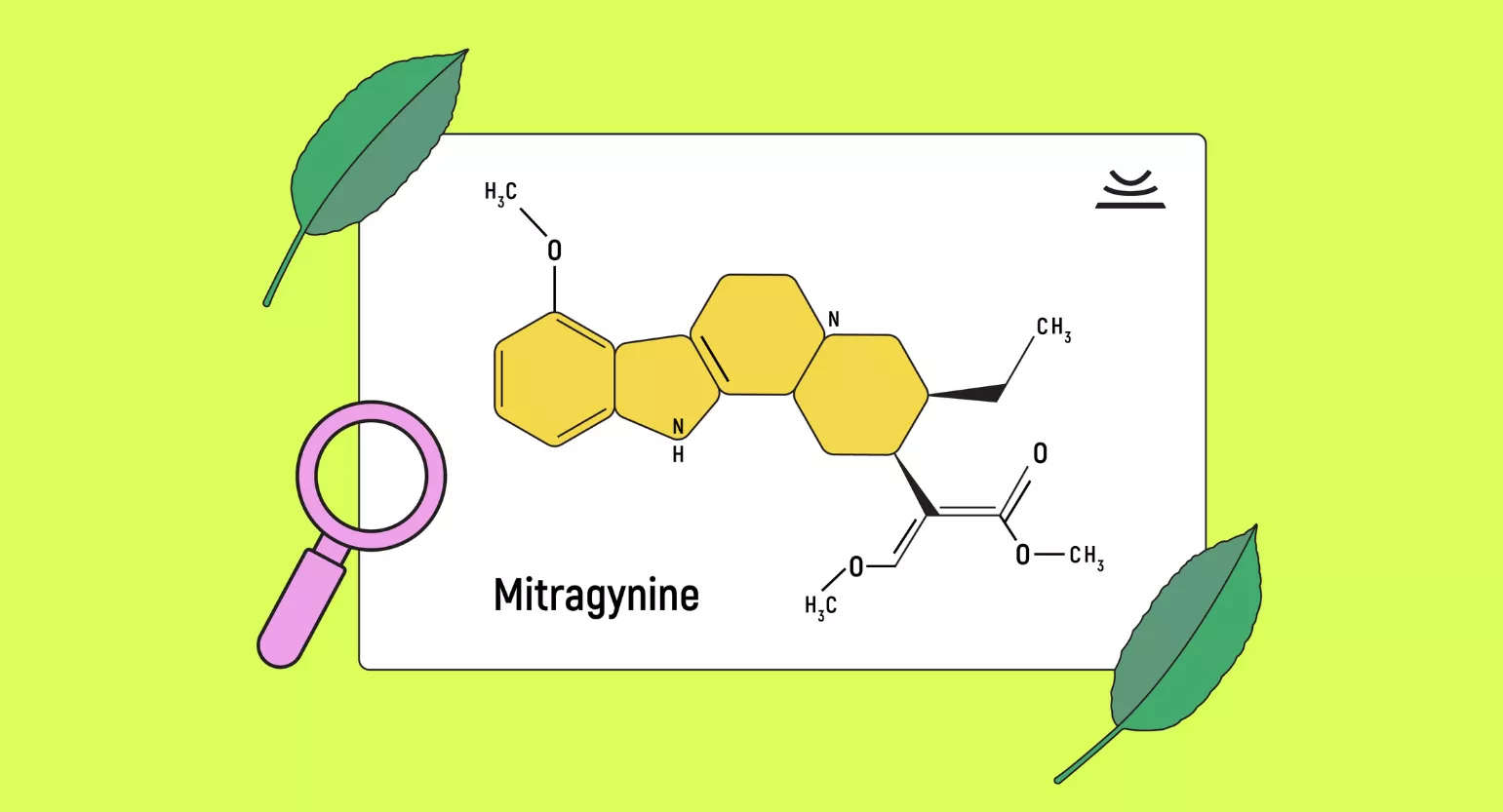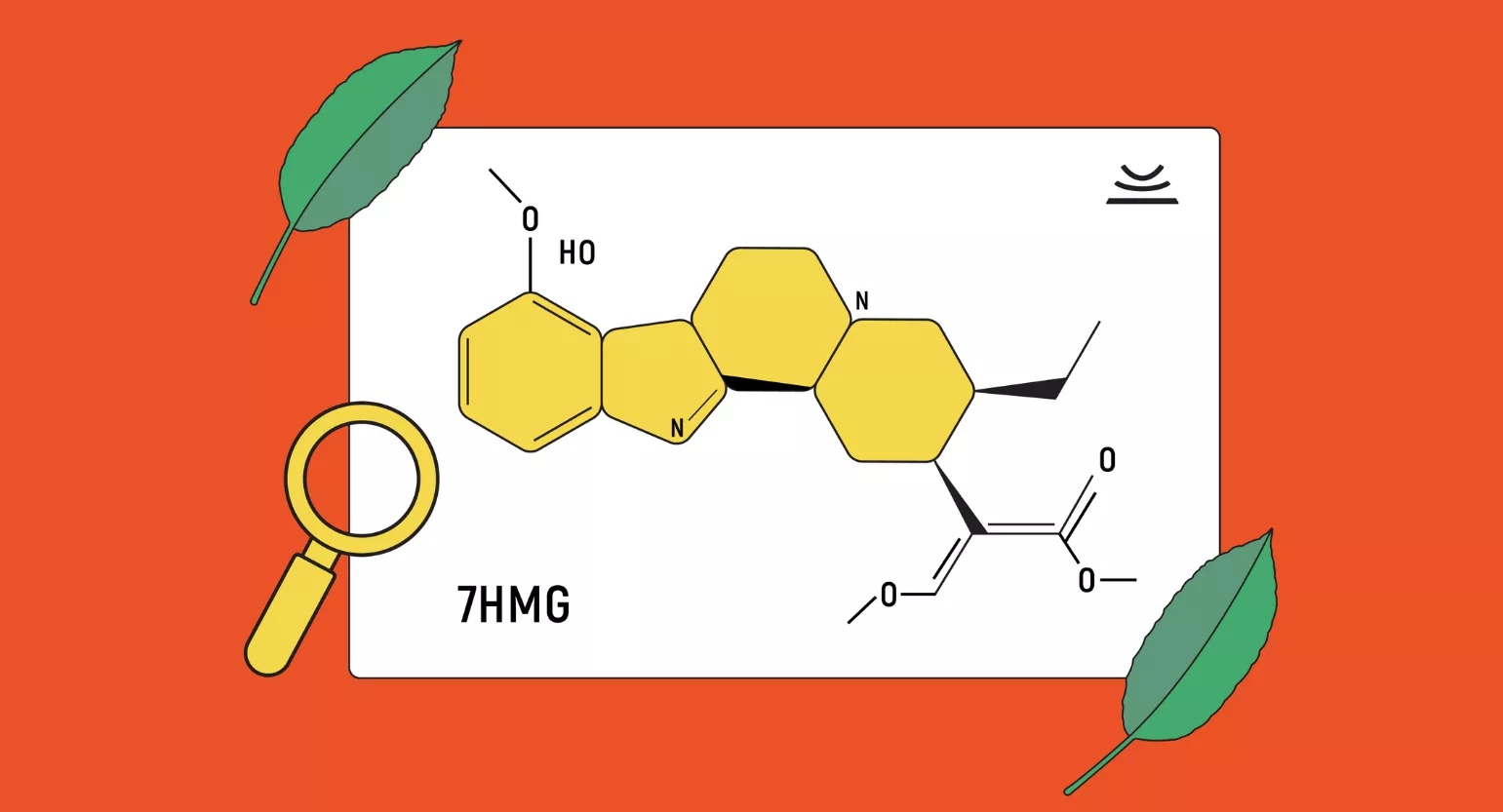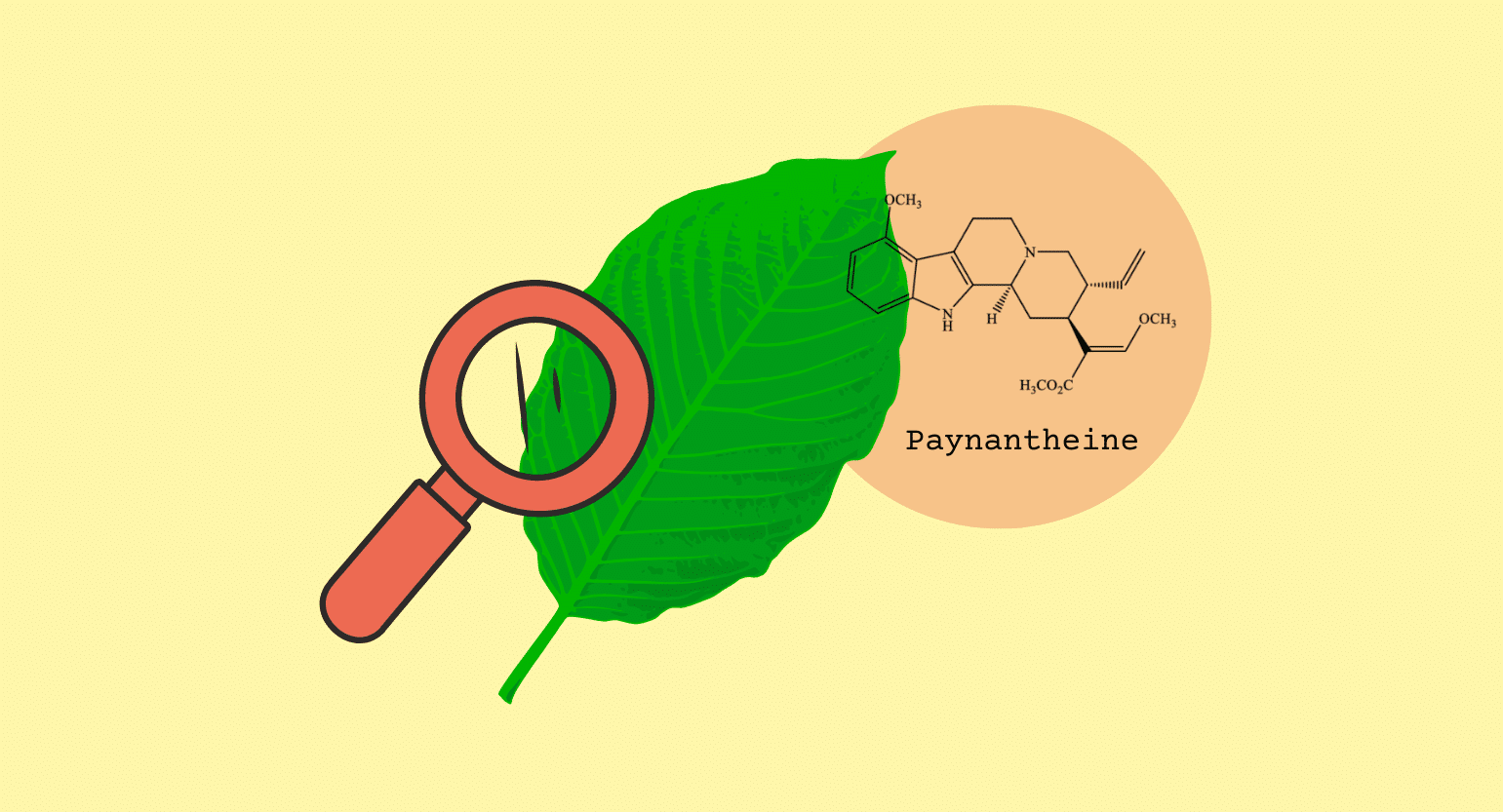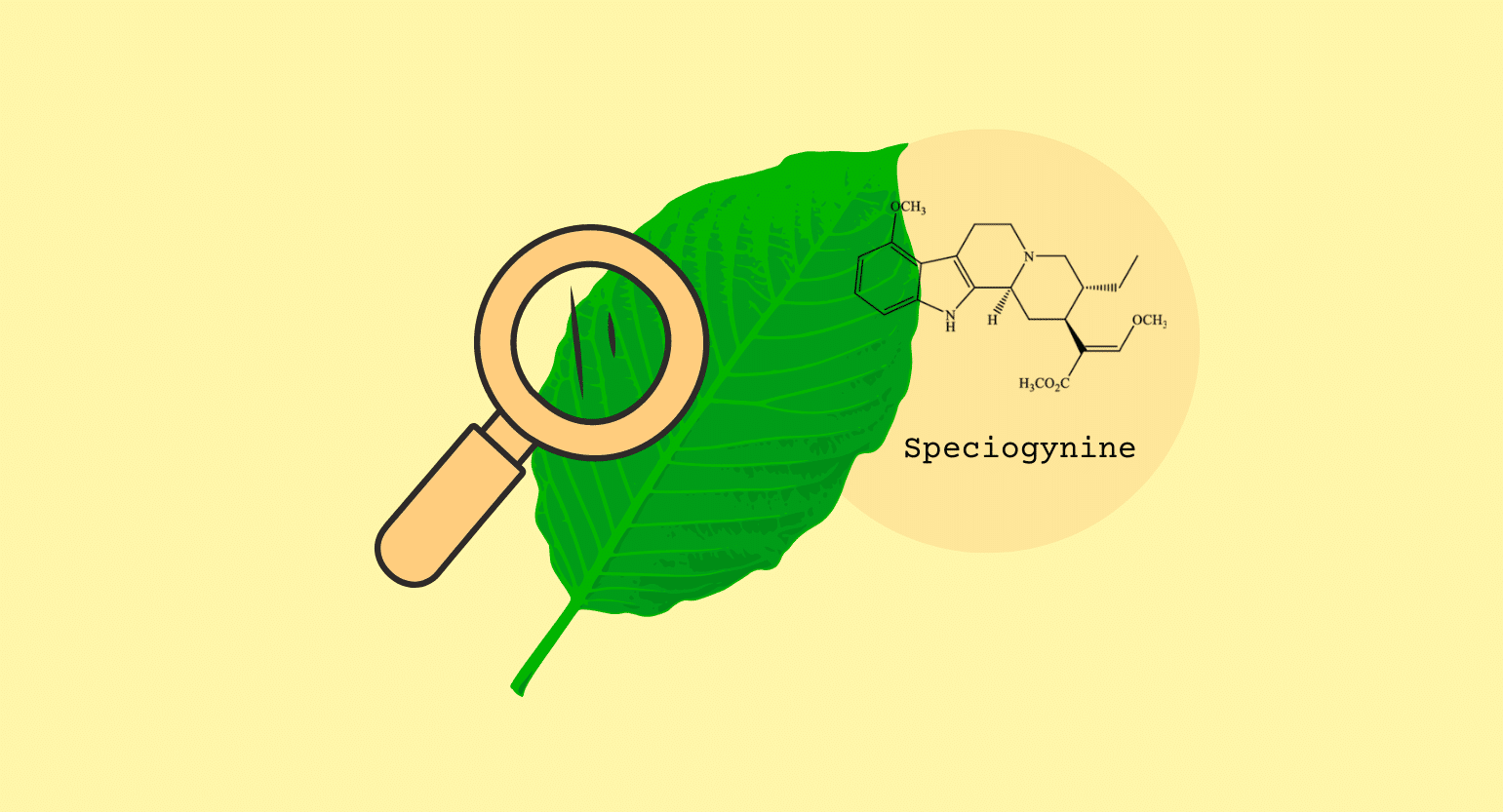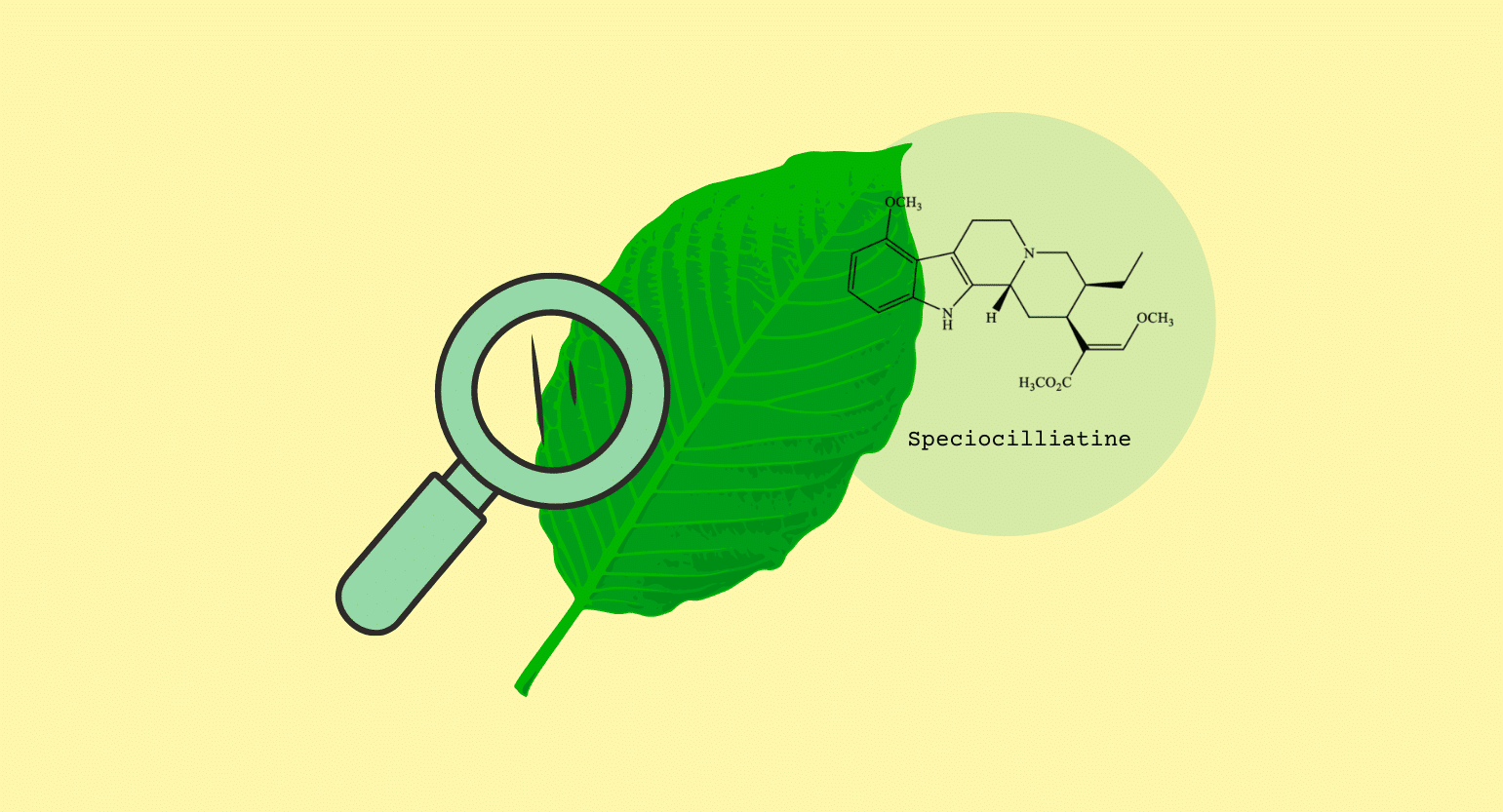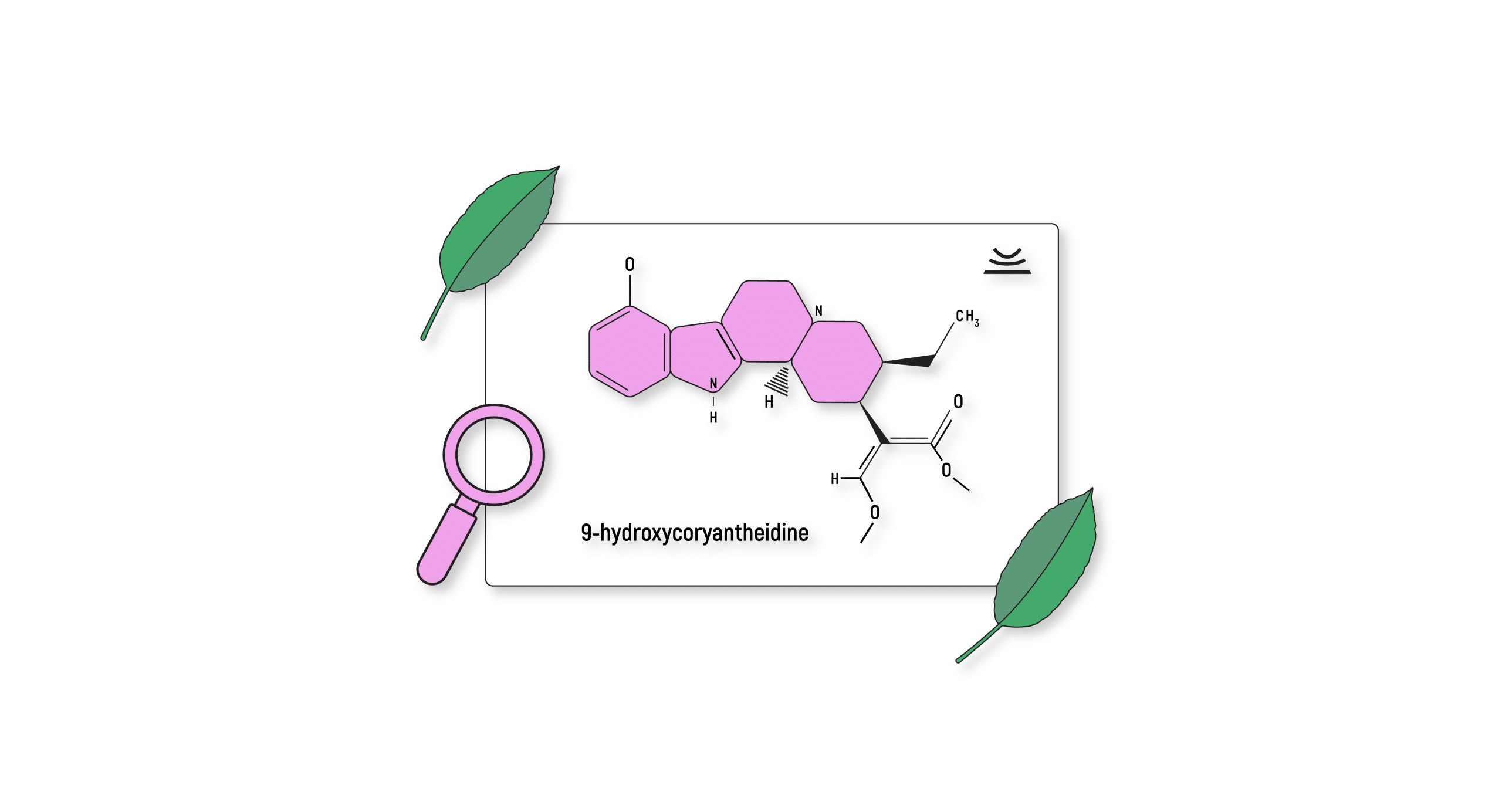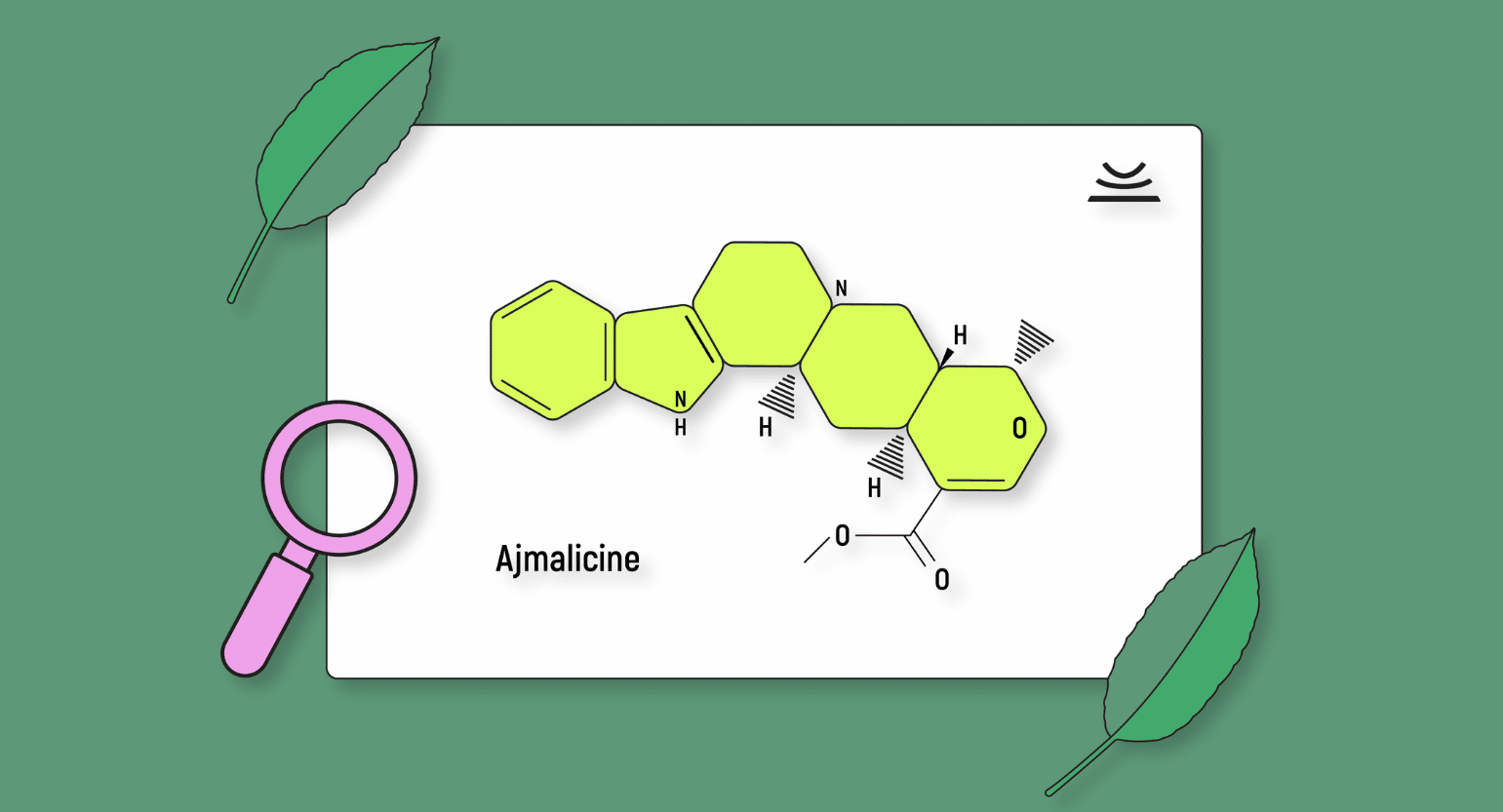What Is Corynantheidine?
Corynantheidine is an alkaloid found in the kratom tree’s leaves (Mitragyna speciosa). Alkaloids are a class of basic chemicals containing at least one nitrogen atom that can have various pharmacological effects. Some popular alkaloid stimulants include caffeine, nicotine, and cocaine.
According to research, many alkaloids offer powerful pain-relieving benefits, and several even have antibacterial effects.
Corynantheidine is difficult to classify since it hasn’t been studied as extensively as more common kratom alkaloids. Still, researchers believe it has analgesic properties and helps create the relaxing, pain-relieving effects for which kratom is famous.
Where Does Corynantheidine Come From?
Corynantheidine comes from kratom. It’s only present in small quantities, with far lower concentrations than mitragynine or 7-hydroxymitragynine, the two most prominent alkaloids in most kratom strains.
Extracting corynantheidine from kratom is a difficult task due to its exceedingly low concentrations, and therefore comparatively less is known about corynantheidine than mitragynine or 7-hydroxy mitragynine.
Scientists have only recently isolated and studied corynantheidine, so little is known about its pharmacological activity or its natural function in kratom plants.
Other primary kratom alkaloids include:
Which Kratom Strains Are Highest in Corynantheidine?
Experts believe that most kratom strains contain small amounts of corynantheidine but postulate that red-vein strains contain the highest concentrations overall.
This is largely due to indirect evidence since corynantheidine is an opioid receptor antagonist. Red strains have more potent analgesic effects than green or white vein kratom. Therefore, it stands to reason that red strains contain the most corynantheidine and that strains that are particularly potent pain relievers contain the highest concentrations.
That said, it’s likely that the best kratom strains for pain relief — including Red Maeng Da, Red Bali, and Red Borneo — contain the highest amounts of corynantheidine.
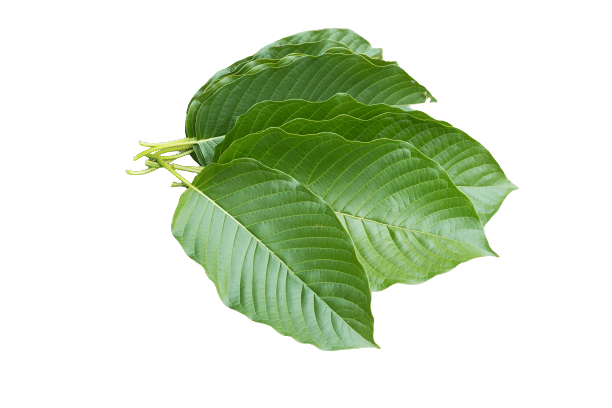
What Does Corynantheidine Do?
Corynantheidine is a minor alkaloid in kratom, meaning less is known about its effects than mitragynine or 7-hydroxy mitragynine.
1. Euphoric
One of the most profound actions of corynantheidine is its euphoric properties. This may be due to the ability of this compound to interact with the 5HT2A receptors (the same receptors targeted by MDMA, LSD, psilocybin, and other psychedelics). However, it could be the result of another effect entirely.
Related: What’s the Best Kratom Strain For Euphoria?
2. Sleep Supportive
Early studies have shown that corynantheidine acts as an α1-adrenergic and α2-adrenergic receptor antagonist. These receptors are part of our fight-or-flight response. When activated, we become more alert, focused, and awake. When inhibited, we may feel the opposite. Our stress response is shut off, and we feel calmer, relaxed, and tired.
It’s thought that corynantheidine is one of the primary sedative alkaloids in the kratom plant.
Related: What’s the Best Kratom Strain For Sleep?
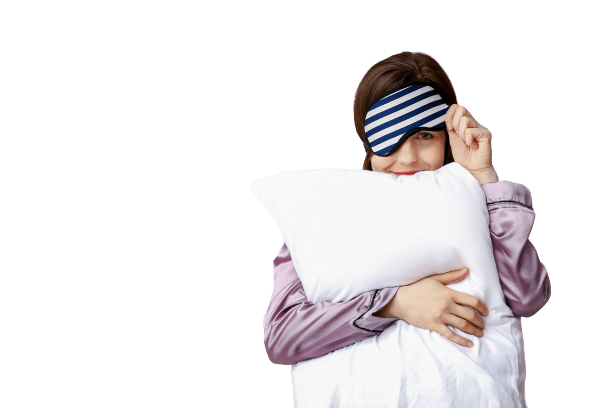
Is Corynantheidine an Opiate?
No, corynantheidine is not an opiate, even though corynantheidine interacts with the body’s opioid receptors. However, it blocks pain signals like opiates and is used to treat opioid withdrawal symptoms due to its similarities.
Corynantheidine is similar enough to opiates that some researchers have suggested using it alongside other kratom alkaloids as a barometer to test opioid receptor function [1].
Related: Is Kratom An Opiate?
Is Corynantheidine Safe?
Corynantheidine, like all other constituents of kratom, should be safe to take as long as it’s consumed responsibly. It is impractical to take corynantheidine on its own, so people interested in taking corynantheidine would most likely take kratom powder, capsules, or concentrates.
Kratom is generally safe to use if you follow some safety guidelines. Most experts recommend limiting weekly use to no more than five days since frequent use can lead to addiction and adrenal fatigue. Additionally, most people recommend taking longer breaks from kratom every one to two months to further reduce the risk of developing a dependence on kratom.
Although corynantheidine isn’t specifically the addiction issue and adrenal fatigue, it does play some part in these side effects.
Side Effects of Corynantheidine
Some people who take kratom report experiencing side effects. The most commonly experienced side effects of kratom include dizziness, nausea, mental fog, tiredness, constipation, and anxiety.
Since corynantheidine is similar to 7-hydroxymitragynine, it most likely has similar side effects. People taking kratom strains high in corynantheidine should be attentive to any nausea or lethargy, as both can be a sign of taking too much.

How Much Corynantheidine Should I Take?
Taking corynantheidine by itself isn’t practical, as it only appears in small concentrations in kratom leaves. As such, most people take the alkaloid by taking kratom. Dosing kratom takes some experimentation to find the right amount for your needs, but below are some guidelines.
Most people recommend small doses in the 1 to 3-gram zone for mild stimulation. If you take a red-vein strain high in corynantheidine, the stimulation will be very slight.
Moderate doses in the 3 to 6-gram range offer most people a blend of stimulation and sedation. Many kratom users describe it as a relaxed, alert feeling, and most say they prefer these moderate doses. Strains with high corynantheidine concentrations will have noticeably more pain-relieving effects at these doses.
Even experienced kratom users consider 6 to 10 grams to be large doses. Beginners should be careful not to take too much since large doses are more likely to cause unpleasant side effects. Kratom is almost entirely sedating at these doses, and many people feel intensely sleepy taking more than 6 grams.
How Long Do the Effects of Corynantheidine Last?
Again, it’s impossible to untangle corynantheidine’s effects from kratom’s effects in general. Although some variation exists between strains, some variation exists between them only recently. Short-duration strains may last as little as 1.5 hours, while long-duration strains can last for 4-5 hours.
It’s also important to realize that kratom’s effects last longer with higher doses. However, controlling the duration of a kratom experience with dosing is difficult since different doses have different effects.
Related: How Long Does Kratom Last?

Wrapping Up: Final Thoughts On Corynantheidine
Corynantheidine is often overshadowed by mitragynine and 7-hydroxymitragynine since the latter two alkaloids make up most of kratom’s alkaloid “budget.”
However, some recent research suggests that corynantheidine may have similar effects to 7-hydroxymitragynine and, therefore, may play an important role in generating kratom’s analgesic and relaxing qualities.
It is impractical to take corynantheidine alone, so taking kratom is currently the only feasible way to consume it. Red-vein kratom is most likely higher in corynantheidine than other strains since corynantheidine is sedating, and red strains are usually the most relaxing.
- Chakraborty, S., Uprety, R., Daibani, A. E., Rouzic, V. L., Hunkele, A., Appourchaux, K., … & Majumdar, S. (2021). Kratom Alkaloids as Probes for Opioid Receptor Function: Pharmacological Characterization of Minor Indole and Oxindole Alkaloids from Kratom. ACS Chemical Neuroscience, 12(14), 2661-2678.

